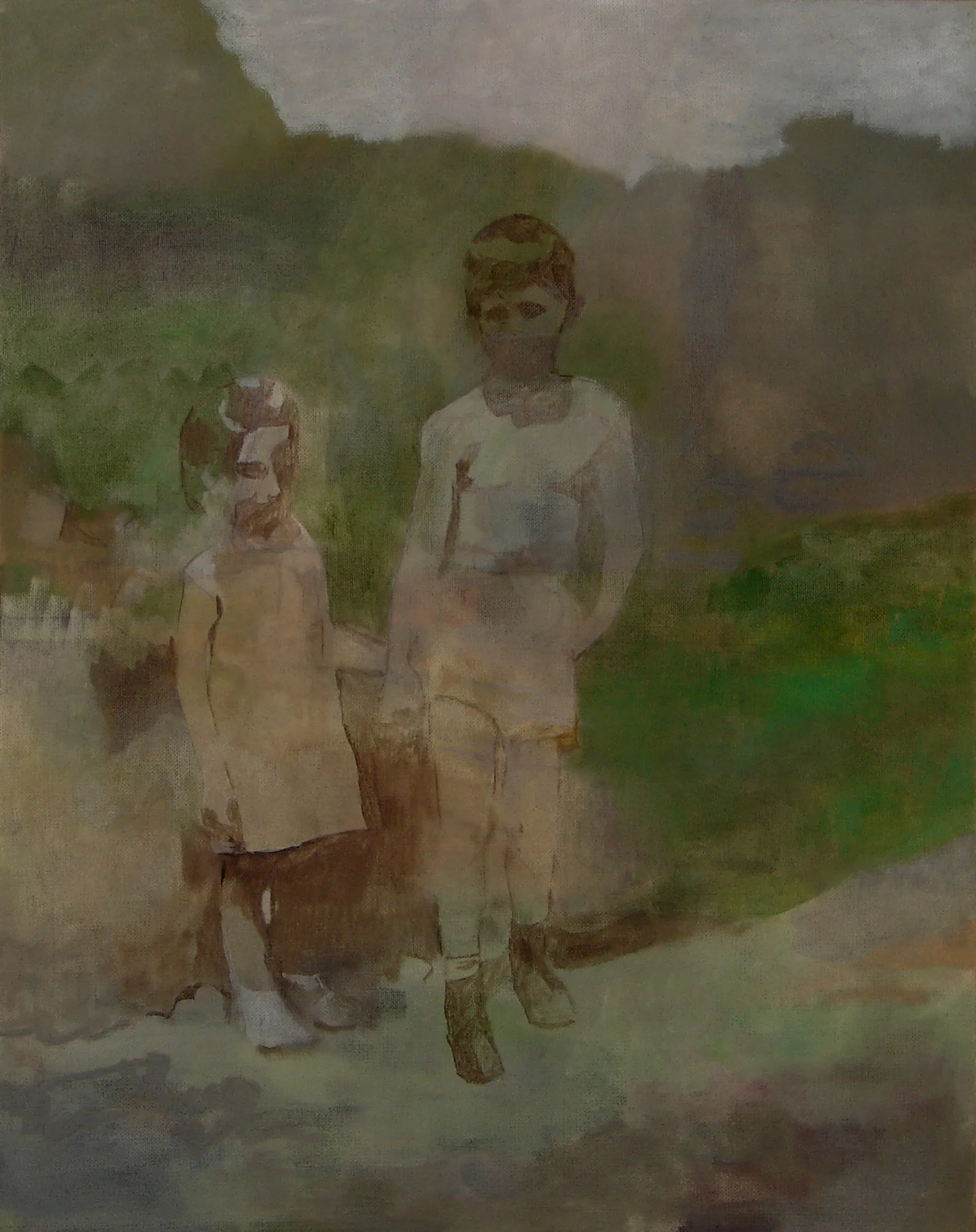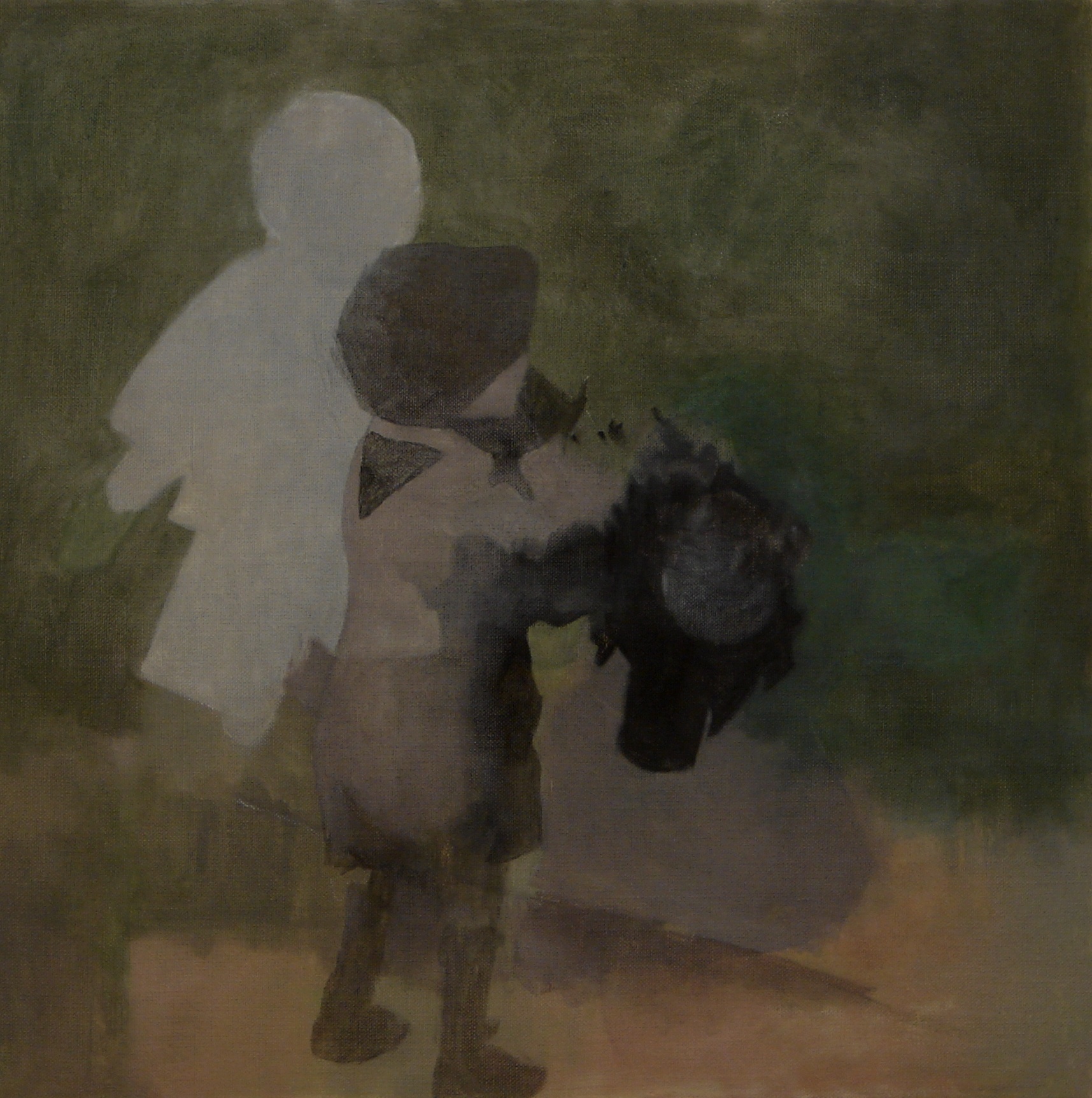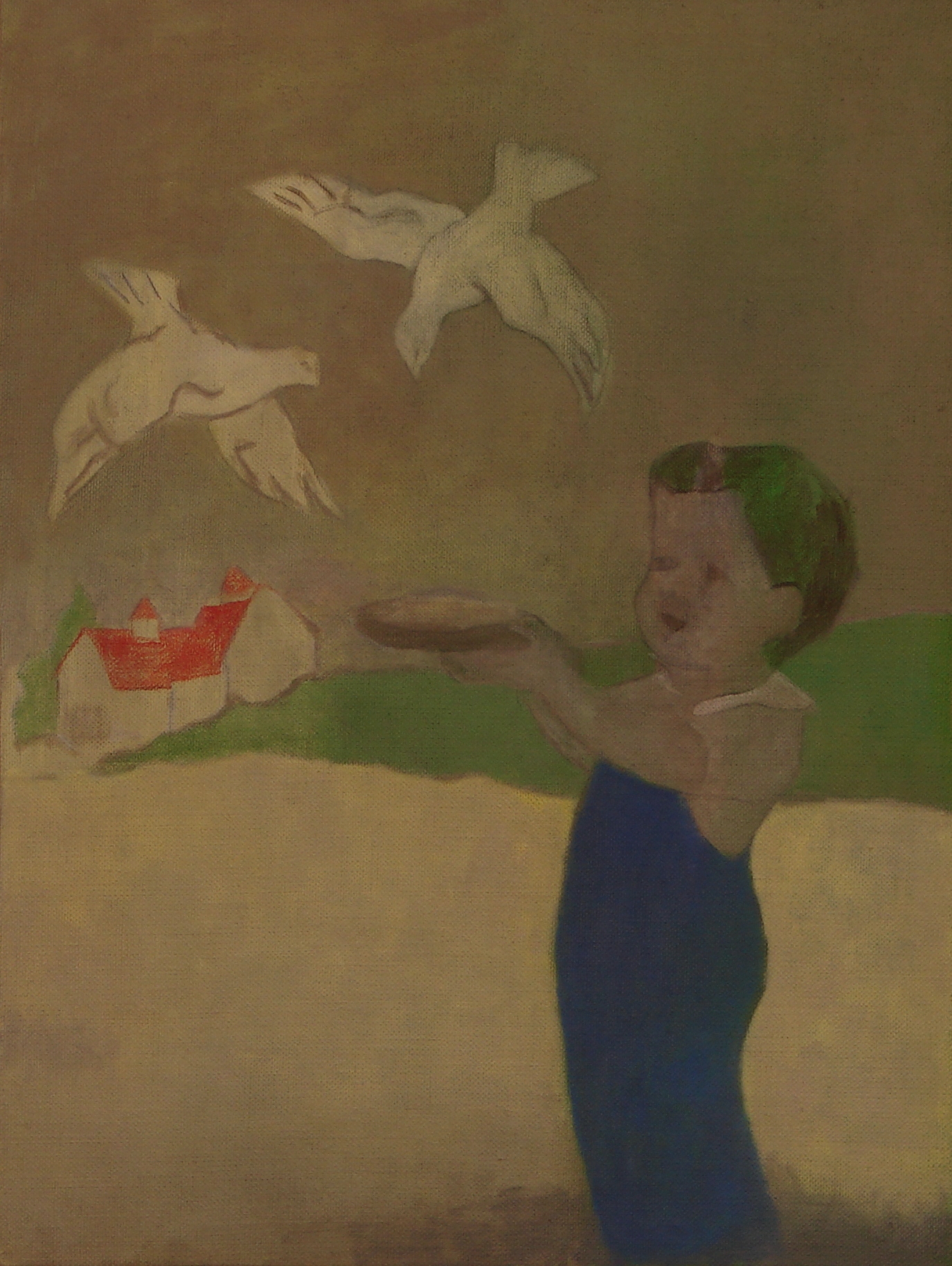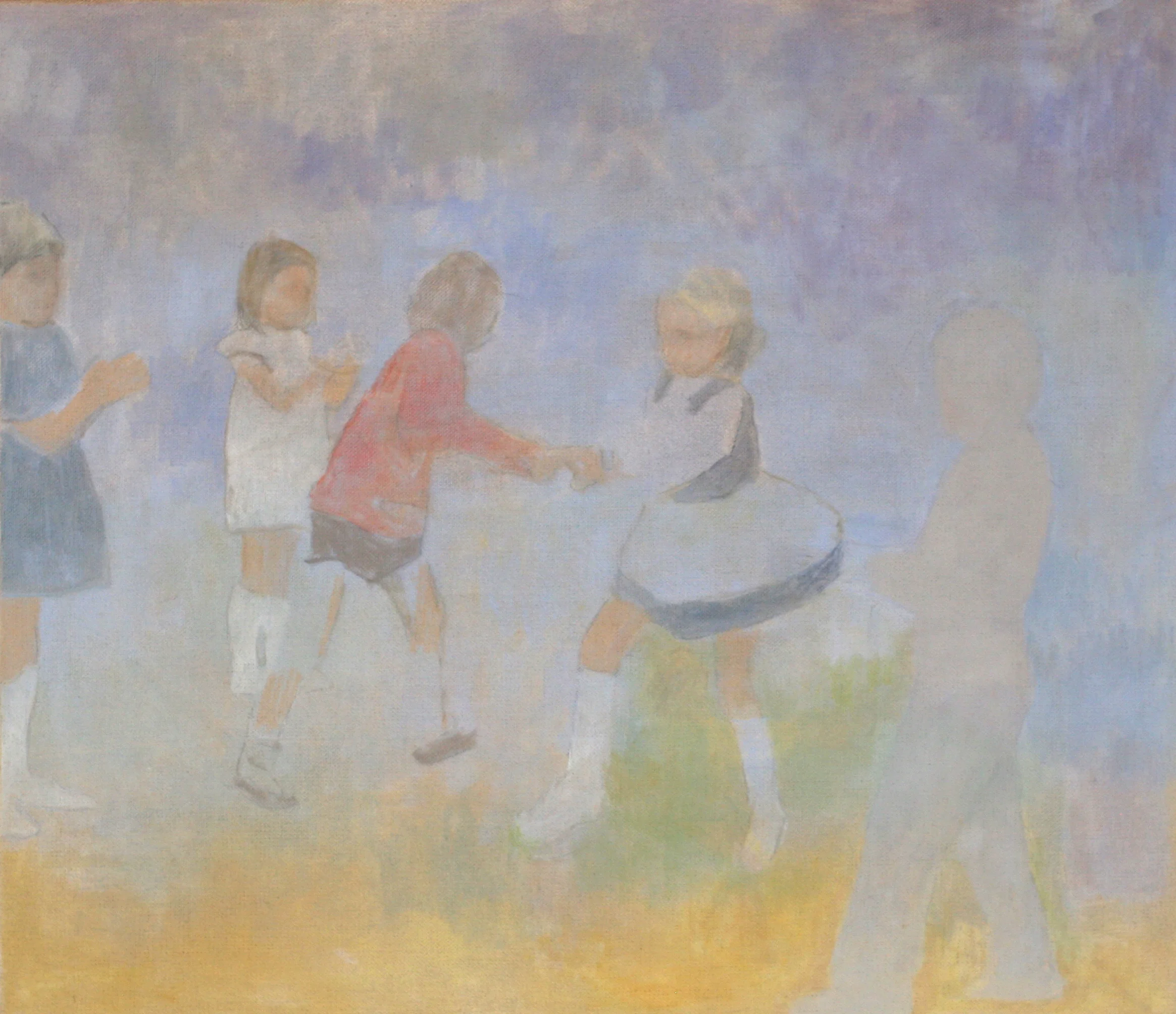Ben Walker
It takes a moment or two to pinpoint one’s reaction to the imagination of Ben Walker. Is our discomfort because they seem to be borrowed unbidden, jackdawed from something familiar, as if stolen from a personal memory? Or is that unease actually a sensation of pleasure, at a snapshot of a fleeting past, captured and preserved in a precise moment of innocence that had been forgotten until now, suddenly released like a bird or seed-head. It all makes sense when the artist explains how his pictures happen.
“I use photos and other ‘found’ source materials such as children’s book illustrations - not contemporary ones - for my paintings. Over the last year or so I have become more interested in making representations of childhood rooted in the past, often 1970s and 80s,” he says. “But I’ve never really used photos of people I’ve taken myself because I like the anonymity of images by strangers. It just has to be a scene or composition I feel I can translate into paint and I think the act of translating the image means it becomes mine. It’s impossible to say how I choose some over others. I like simple images and I try to show a lot with very little,” often leaving out something substantial from the original, “so the painted image is a simplified condensed version.”
It is that brief moment of thoughtful intensity that betrays Walker’s other distractions. As well as being curious about historical events, particularly the rise of Nazism and its awful dehumanising effect “I’m really into Henry Darger who did hundreds of quite obsessive paintings of children and also some British painters from the last century like Ivon Hitchens and Paul Nash.” Music is very important too. “I think Joy Division, the Cure and the Durutti Column all have this grey English/British atmosphere and this is very important to me.” Indeed, he is an ardent collector, at least as much as he can afford to be. “It’s mostly small scale paintings, quite traditional landscapes mainly, also some pictures of children. I have some lovely watercolour sketches of English landscapes from the 1950s that are simple but quite delicate and some items associated with WW2 like photo albums.” But it is his collection of Joy Division memorabilia that he is proud of. “I have lots of records, bootlegs, rare books and fanzines, photos, a setlist.. prices can be very high but when you start collecting it can take hold of you. Searching for and finding things is a good buzz but you have to be so careful financially.”
In complete contrast to those airy though expectant voids in his paintings, Walker has a job in crowded Whitechapel, in supported housing for homeless men. “I would say I mostly enjoy it, although working with this client group can be difficult as they have a lot of problems and can be quite antisocial. It doesn’t have an influence on my paintings, I try to keep them as separate parts of my life.” With a considerable background of study, exhibition and creativity in London, he decided to forsake city studio life at Bow Arts and now paints at home in the scrubby open-skied reaches of Erith where he can be close to his girlfriend and his cats, and concentrate.
“I am very careful about colour, I love the combination of shades of grey, with some areas of richer deeper colours.” He feels the challenge is to get it right, “so the whole canvas works.” He loves the business of applying paints, of placing colours until things fit. “Because I work on loads of paintings at same time, building up thin layers, I can alter them, scrub things out, change my mind.. Sometimes I have to live with a picture for a little while before I can decide whether it is finished.”
Growing up away from homeless hostels and the Thames hinterland in what the Jack Goldhill prize winner describes as a “very suburban small town/village,” he had many friends and by his own happy submission, a great childhood; his favourite books feature lots of adventure and wild-life: The Famous Five, Where the Wild Things Are, the now out-of-print and highly collectable Wide Awake Jake by Helen Young. “We did go out in the countryside a lot back then, that’s probably why I like to paint outdoor scenes.” As a child he loved nature and he has finally returned to it. “It’s what I like to look at and think about and remember.” And he has begun including animals in his work, admitting: “I wouldn’t have done this in the past because I would have worried it wasn’t a serious subject but as you get older you don’t care as much what other people think. I have decided to just do what I want to do!”
Ben Walker maintains he doesn’t begin his pictures with a narrative, that at first it is more about depicting or expressing a mood. “Often it’s only when they are complete that I begin to think stories could be read into them.”
That’s where we come in. It is now our turn to tell those stories.
written by Justine Crow





















